Constantinople
British Exports
Britain AD: King Arthur’s Britain

Neville Oldham
Britain was at the edge of a vast trade network, driven by Constantinople, the new powerhouse of the ancient world. Power shifted to Constantinople,
modern-day Istanbul, after Rome was sacked by the Barbarians in 410. The Eastern Empire continued to be run here for a further thousand years.
But what brought these Mediterranean traders to Britain? What did we have two offer them?
A discovery in Devon in 1995 provided a clue. Divers looking for the remains of a galleon came across a most unusual find.
Neville Oldham “This estuary was mistaken as the entrance to Plymouth Sound. They’d seen this expanse of water, but there is a hidden reef of
rocks. Hit that lot, I mean, you’ve had it, haven’t you?”
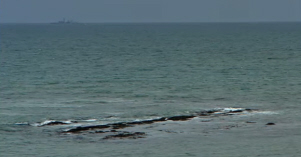
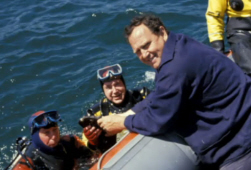
Overjoyed Divers
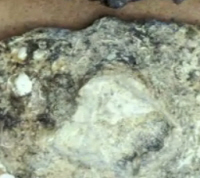
Solid Tin Ingot
The first two divers came up to the surface, big smiles from ear to ear, with these tin ingots. It’s heavy isn’t it?
Neville Oldham “Yes, it’s pure tin. When we had them analysed, the analysed them as 99.9% pure tin. This is the clue that they are very old. One
theory is they were ferrying them out to a boat and they turned over on the reef.”
Tin had been a British export since prehistoric times. It was known to the Romans as the “British metal”. Is this what Byzantine traders were
coming to collect from Tintagel?
David Williams “If you control a large area, you let it be known that by mid-summer, the tribute you going to enforce is X blocks of tin, and
you collect a lot of this. And this is something which would be extremely exchangeable in terms of Mediterranean goodies.”

David Williams
The tin that the divers found lay a few metres away from a beach which has yielded some intriguing remains. Coastal erosion has revealed hearths
were meat had been cooked. Could these be connected to the tin trade?
Sam Turner is about to start excavating here.
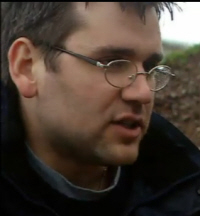
Sam Turner
Sam Turner “There are several hearths eroding from the cliff. The site’s been known about since the 1960s and has been monitored. The erosion’s
got really quite bad recently. In fact, you can see charcoal deposits in the sand coloured, blackened material. That’s part of a hearth which
extends 5 of 6 feet across this area.”
But there is more than just charcoal. That looks like a bit of bone.
Sam Turner “There’s bone from various species. Some has been butchered on-site.”
What’s going on? They’re right on the seashore.
Sam Turner “It’s probably a seasonal settlement associated with activity going on here, probably trading activity. We know imported pottery
from the Mediterranean has been found here. This trading activity was going on all around the south-west peninsula.”
Mediterranean pottery, why is it being used on the port. You don’t get champagne bottles being opened in the Port of London, do you?
Sam Turner “This activity must be associated with the social elite. These presumably would be the people who were here undertaking trade, using
it as a meeting place to exchange news and ideas.”
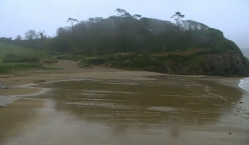
South Coast Beach
Sam’s discoveries were not unique. All along the coast is evidence for more of this elaborate activity. On this shoreline alone, 500 shards
of pottery and 10 feasting sites have been found. These hearths were the remains of what can only be described as beach parties, held on the
occasion of visits from Mediterranean traders. Such festivities indicate there was more to this contact than the simple exchange of tin for wine.
Today, we place different aspects of our lives into clearly labelled boxes, work, trade, religion, politics. But in the past, these partitions
didn’t exist. So I don’t suppose that the Mediterranean and British traders were there just to exchange goods. These beach markets were to do with
something altogether more profound, the ceremonial exchange of beliefs and ideas. And some archaeologists even believe that these ceremonies were
politically driven.






